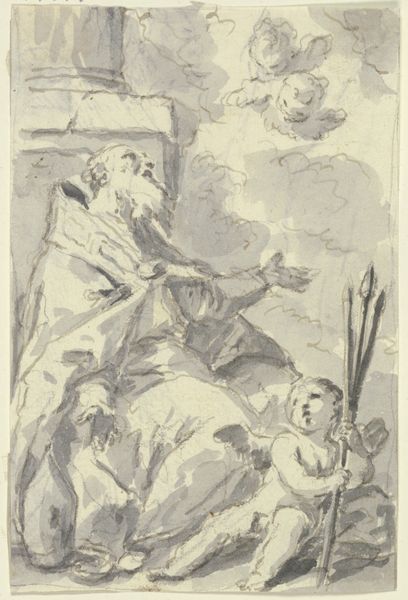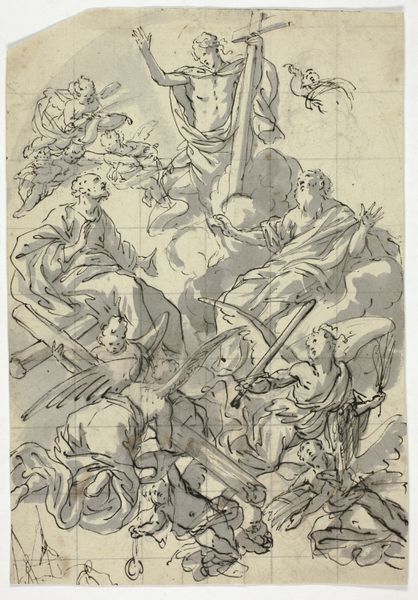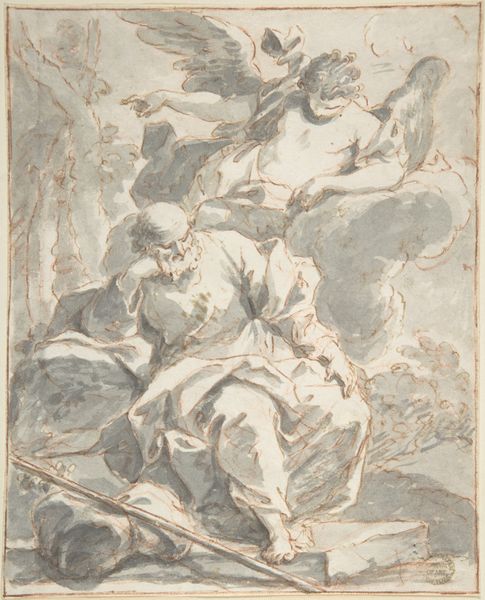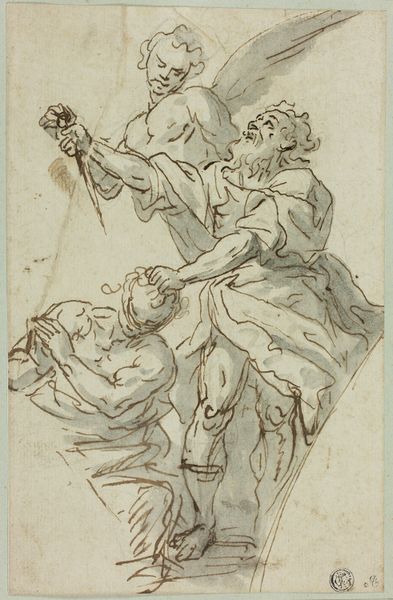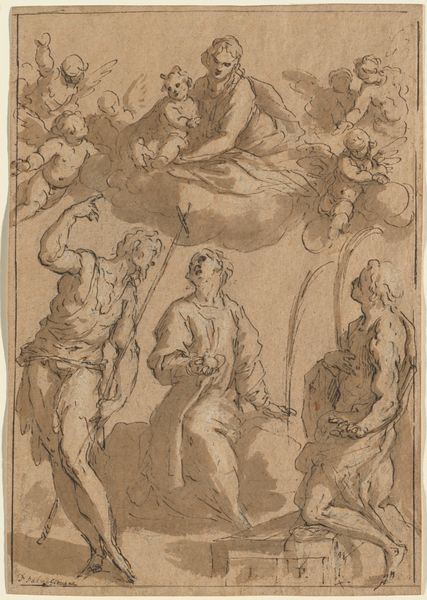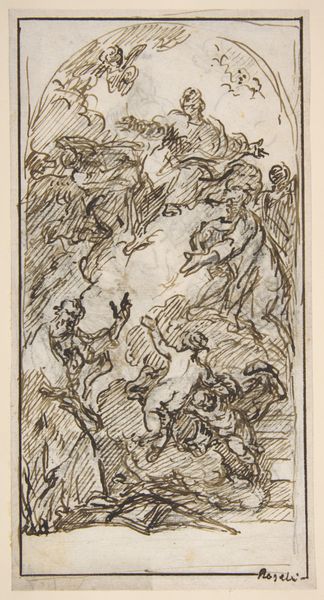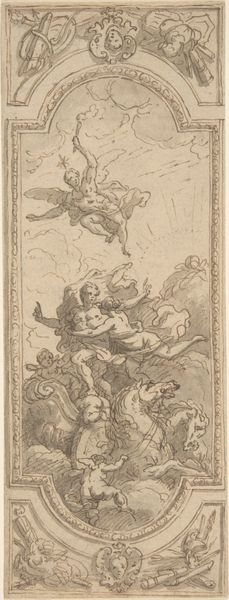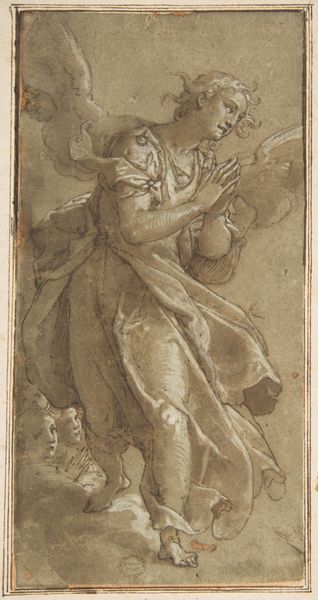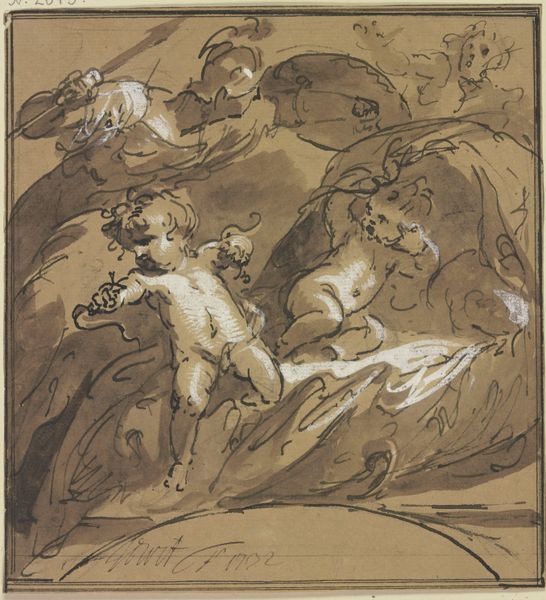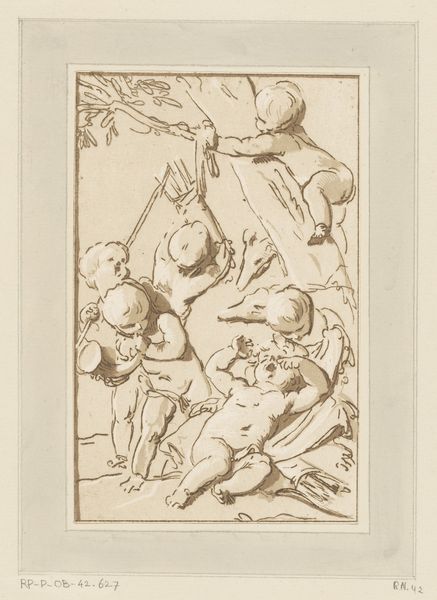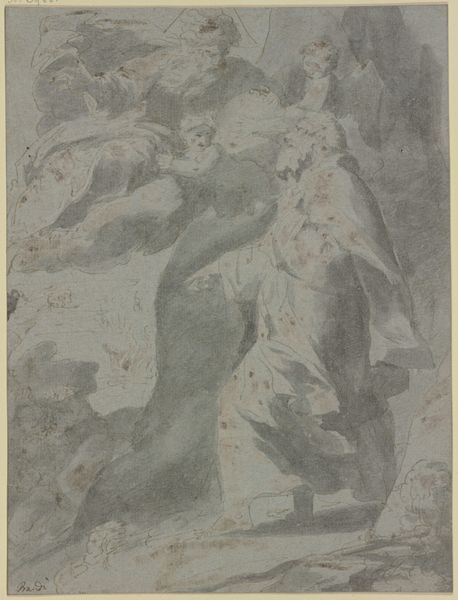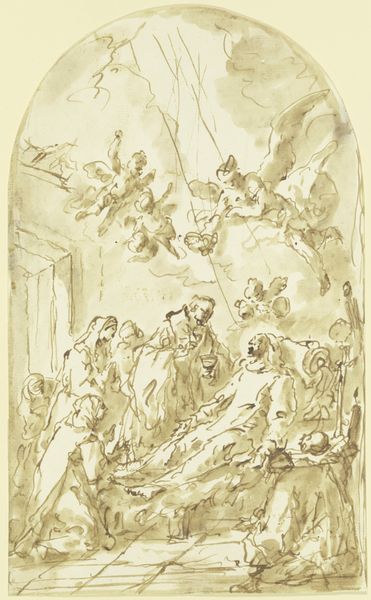
drawing, paper, ink, chalk, pen
#
drawing
#
ink drawing
#
medieval
#
narrative-art
#
figuration
#
paper
#
ink
#
ink drawing experimentation
#
chalk
#
pen
#
history-painting
Dimensions: 177 × 99 mm
Copyright: Public Domain
Curator: Here we have "Sketches of Madonna and Child, Flaying of Marsyas," an intriguing work of unknown date housed here at the Art Institute of Chicago. It employs pen, ink, chalk, and paper to present a striking juxtaposition. Editor: It feels like a study in contrasts, quite literally. The flowing lines give it a sense of movement, yet the subject matter itself is incredibly static, poised between violence and tenderness. There is brutality, and then there is the Madonna. Curator: Absolutely. We must consider the prevalent narratives and iconographies circulating during the period this sketch was likely created. Representations of the Madonna and Child were incredibly important, tied to cultural values around family and religious devotion. And representations of Marsyas remind of what is due to god. Editor: So, on the one hand, you have this incredibly familiar, comforting image, which could reflect the cultural emphasis of motherhood; yet just beneath that, there is violence as Marsyas, the mythological figure known for challenging Apollo in music, meets his gruesome end, the removal of his skin. Curator: Yes, these drawings, made in ink and chalk, represent very strong, yet quite familiar themes. "Marsyas" reflects power and control; its presence in visual arts functioned as a form of social pedagogy that aimed to uphold institutional authority, with violence often at the forefront. The composition clearly divides into two thematic sections to express this view. Editor: Right, the choice to display these narratives side-by-side is a compelling statement about the function of art and its capacity for emotional extremes. Where the nurturing, warm aspect offers comfort, the lower aspect portrays how dangerous it is to disobey god. I am left wondering whose story and whose emotion this artwork expresses; after all, one dominates through violence over another's vulnerability. Curator: Thank you, your insights today were enriching. Examining the drawing considering various intersectional viewpoints encourages reflection, urging viewers to recognize art's engagement with sociopolitical discourse. Editor: Indeed, it urges viewers to recognize art's engagement with complex ideological, historical, and sociological currents. It underscores how deeply interwoven culture and the politics of identity really are, and allows me to contextualize artworks in our increasingly contested times.
Comments
No comments
Be the first to comment and join the conversation on the ultimate creative platform.

